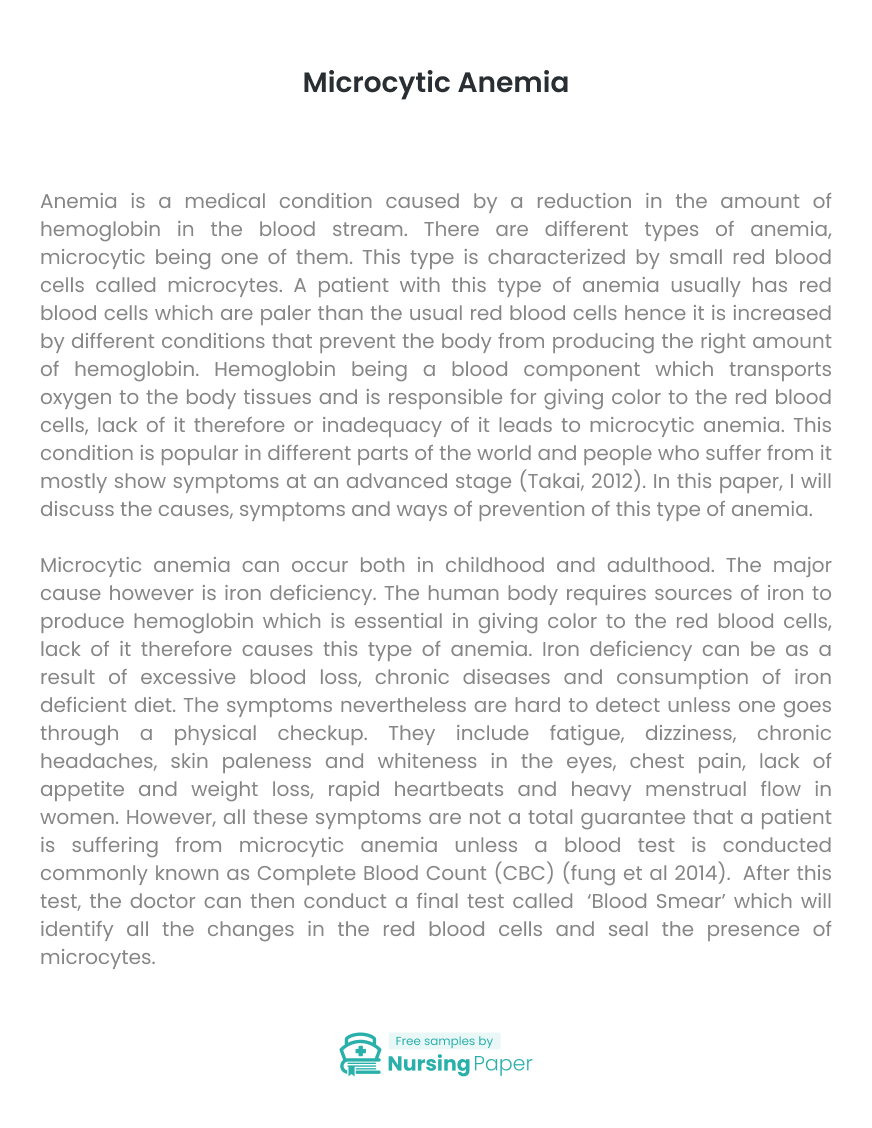1. Kawabata, H., Takai, K., Kojima, M., Nakamura, N., Aoki, S., Nakamura, S., & Masaki, Y. (2013). Castleman-Kojima disease (TAFRO syndrome): a novel systemic inflammatory disease characterized by a constellation of symptoms, namely, thrombocytopenia, ascites (anasarca), microcytic anemia, myelofibrosis, renal dysfunction, and organomegaly: a status report and summary of Fukushima (6 June, 2012) and Nagoya meetings (22 September, 2012). Journal of clinical and experimental hematopathology, 53(1), 57-61.
2. DeLoughery, T. G. (2014). Microcytic anemia. New England Journal of Medicine, 371(14), 1324-1331.
3. Garg, A., Hernandez, M. D., Sousa, A. B., Subramanyam, L., Martínez de Villarreal, L., dos Santos, H. G., & Barboza, O. (2010). An autosomal recessive syndrome of joint contractures, muscular atrophy, microcytic anemia, and panniculitis-associated lipodystrophy. The Journal of Clinical Endocrinology & Metabolism, 95(9), E58-E63.
4. Bergmann, A. K., Campagna, D. R., McLoughlin, E. M., Agarwal, S., Fleming, M. D., Bottomley, S. S., & Neufeld, E. J. (2010). Systematic molecular genetic analysis of congenital sideroblastic anemia: evidence for genetic heterogeneity and identification of novel mutations. Pediatric blood & cancer, 54(2), 273-278.
5. Urrechaga, E., Hoffmann, J. J. M. L., Izquierdo, S., & Escanero, J. F. (2015). Differential diagnosis of microcytic anemia: the role of microcytic and hypochromic erythrocytes. International journal of laboratory hematology, 37(3), 334-340.

The download will start shortly.



 Subject:
Subject:
 Number of pages: 7
Number of pages: 7